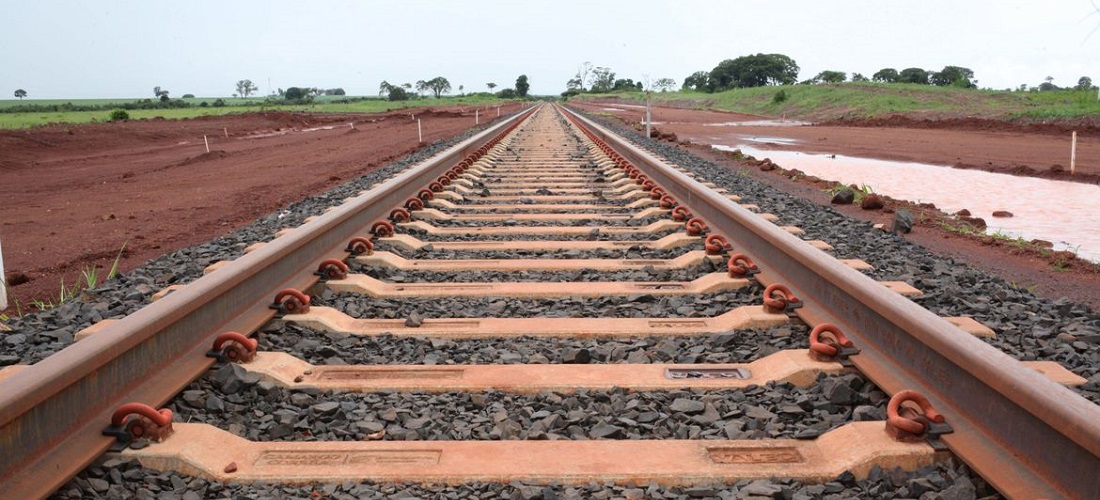
New ‘Ferroeste’ railway to become Brazil’s second-largest export corridor for grains and containers
Jul, 25, 2022 Posted by Gabriel MalheirosWeek 202230
The railway modal has gained prominence in the Brazilian transport infrastructure thanks to projects that expand the country’s rail network to flow commodities and other goods. This is the case of New Ferroeste, a railroad that will unite the states of Paraná, Mato Grosso do Sul, and Santa Catarina.
More than 1,500km of train tracks will be built between the municipalities of Maracaju (MS) and Paranaguá (PR), in addition to creating a branch between Foz do Iguaçu (PR) and Cascavel (PR) and between Chapecó (SC) and Cascavel (PR). The railroad road will cross approximately 67 municipalities.
According to the government of Paraná, “once the railroad is completed, it will become the second-largest grain and container export corridor in the country.” The idea is for the project to be auctioned in the second half of 2022. The initial bid will be R$110 million.
The coordinator of the Railroad Plan of Paraná, Luiz Henrique Fagundes, says that, among the benefits presented from the project, the most important is the lowering of costs, the expansion of export capacity, and the reduction of travel time.
“As for how the project was structured, we were very innovative. We are in the process of transferring ownership of the contracts. We have a concession contract and four authorization contracts. We will provide society with infrastructure that will be the solution for the country south of the 16th parallel. Of course, it is a project with Paraná’s DNA, but the impact is national and even international when you think about Paraguay,” points him.
Regarding exports, currently, the throughput in the Port of Paranaguá reaches 45 million tonnes. Of this total, 80% of the terminal’s import and export demand is transported by road. In turn, rail freight volume corresponds to only 9 million tonnes.
The president of the Brazilian Association of Infrastructure and Basic Industries (Abdib), Venilton Tadini, says that New Ferroeste brings out several relevant aspects, especially the expansion of economic competitiveness.
“Currently, rail transit accounts for around 20% of all freight, which is expected to rise to approximately 36% shortly. This would undoubtedly boost the competitiveness of Brazilian products not only in the domestic market but also in the foreign arena. We will carry commodities from various states, like Mato Grosso do Sul, São Paulo, Santa Catarina, Mato Grosso, and Goiás, to Foz do Iguaçu, with connections to Paraguay and Argentina,” assesses him.
Other railroads
A survey by the National Confederation of Industry (CNI), entitled “Privatization agenda: advances and challenges,” reveals that, in Brazil, railways are predominantly operated by the private sector since the privatization of Rede Ferroviária Federal S/A (RFFSA) and Ferrovias Paulistas S/A (FEPASA), in the late 1990s.
According to the study, for 2022, two early contract extensions are planned. One concerns the Ferrovia Centro Atlântica (FCA), controlled by VLI Logística; and the other to the Southeast Regional Network, from MRS Logística. In addition, 65 requests for railway authorizations are expected to be approved by the federal government by the end of this year.
“The New Railways Law, which authorizes the construction and operation of railway lines by the private sector, was recently approved. We have the option of using these authorized railways for short-distance stretches, for example. We also have the option of an early contract extension, which can offer extra resources for investment in network expansion,” explains CNI’s Infrastructure specialist Matheus de Castro.
The railway sector also sees the prospect of the EF-170 MT/PA (Ferrogr auctionão), despite the project’s economic, financial, and environmental impasses. By November 2021, the federal government had received 21 requests for railway construction by private operators – in addition to New Ferroeste – totaling more than BRL 90 billion in planned investments and 6,220 km of new tracks in 14 states of the country.
Source: Gazeta do Norte
To read the full original article, please go to: https://gazetadonorte.com.br/2022/07/25/ferroeste-ferrovia-vai-criar-o-segundo-maior-corredor-de-graos-e-conteineres-do-brasil/
-
Automotive
Mar, 23, 2023
0
Credit limitations do not hamper industry growth driven by exports, say Brazilian automakers
-
Ports and Terminals
Nov, 23, 2021
0
Eneva considers new gas terminal at Porto do Itaqui
-
Other Cargo
Sep, 21, 2023
0
China just stopped exporting two minerals the world’s chipmakers need
-
Aug, 17, 2021
0
The US exports the same amount of beef as Brazil, but earns much more



